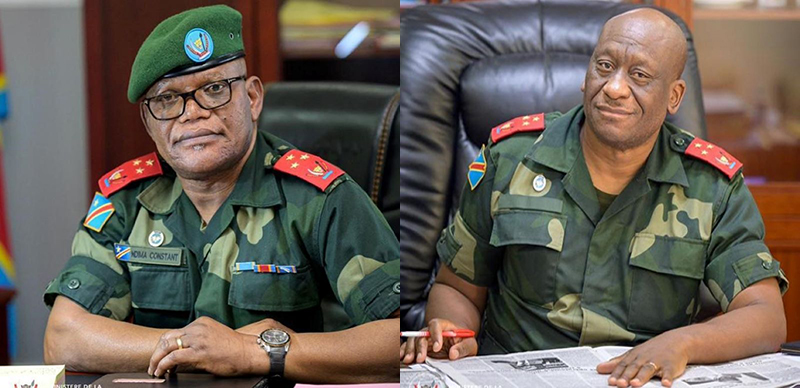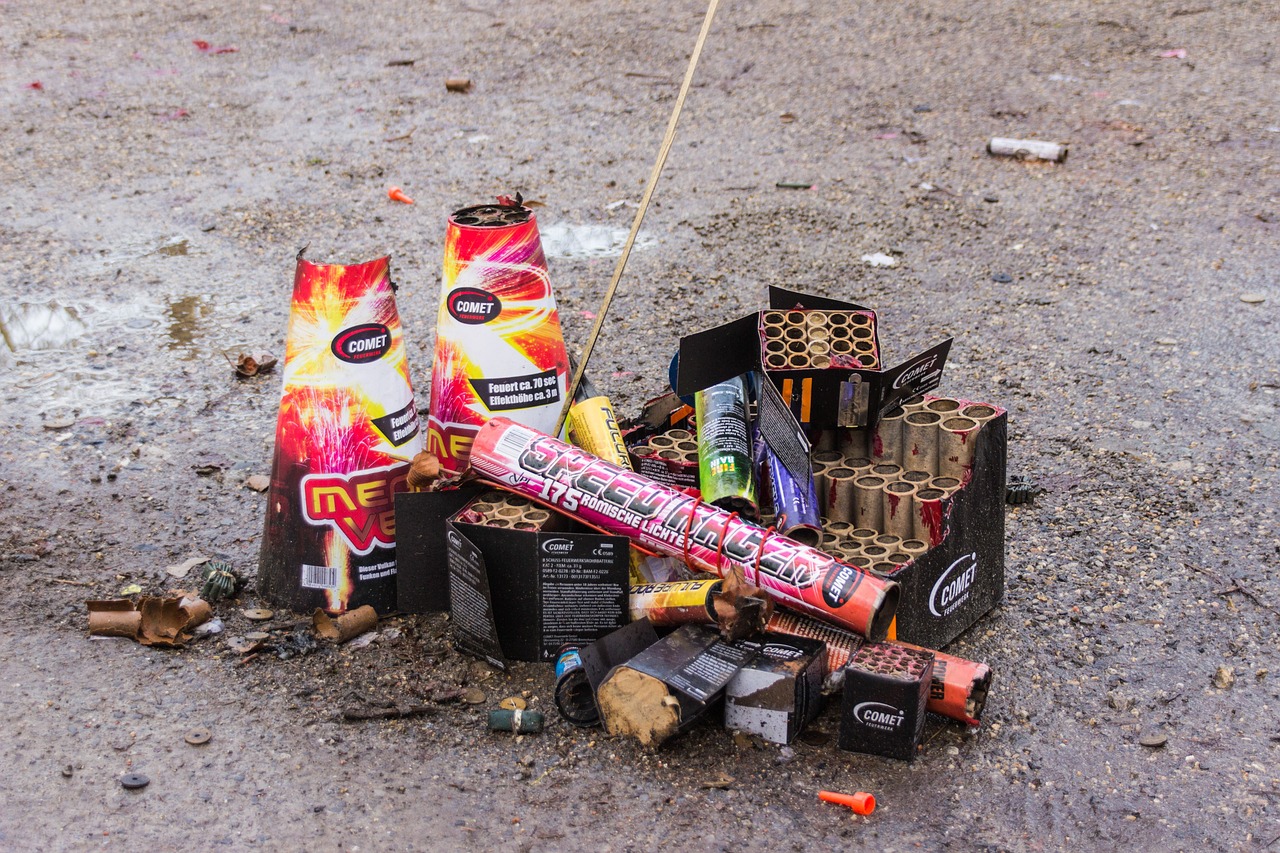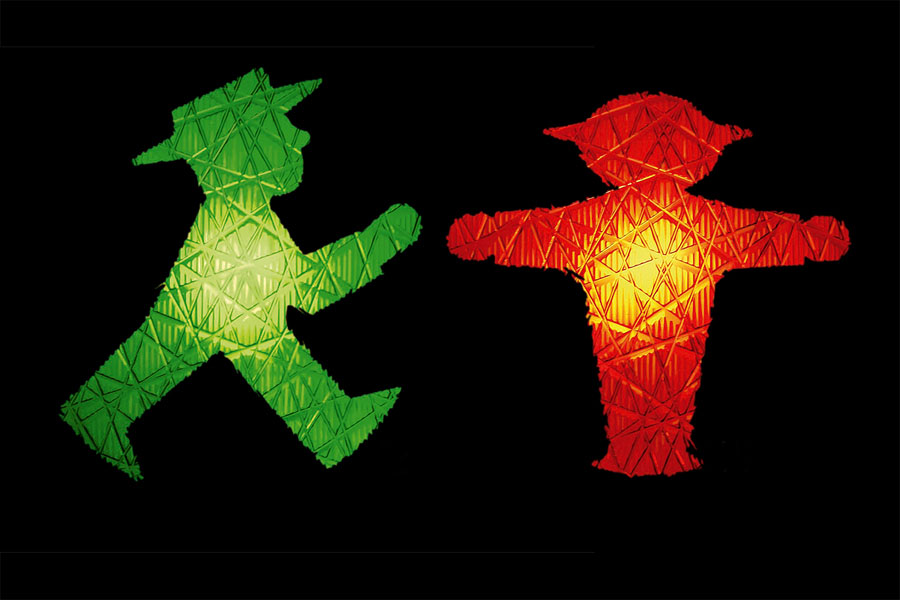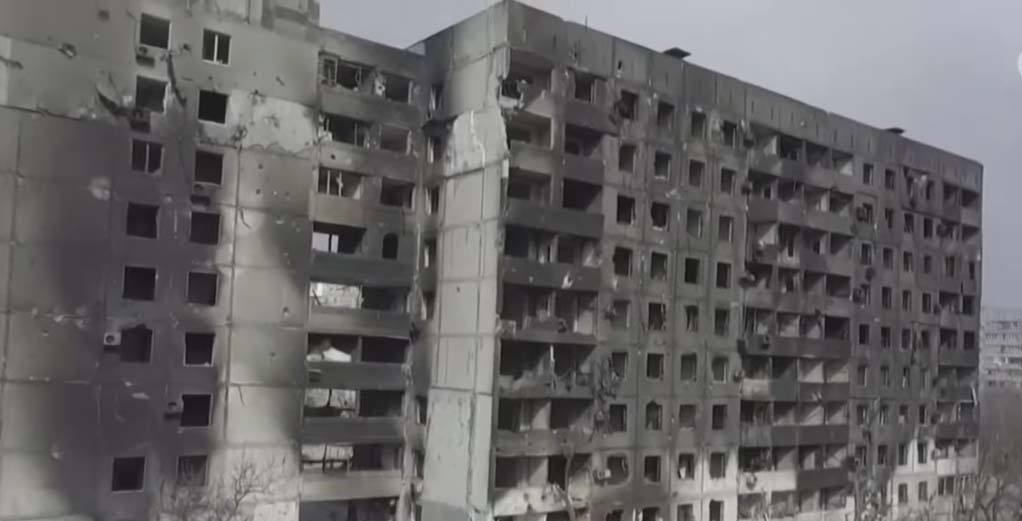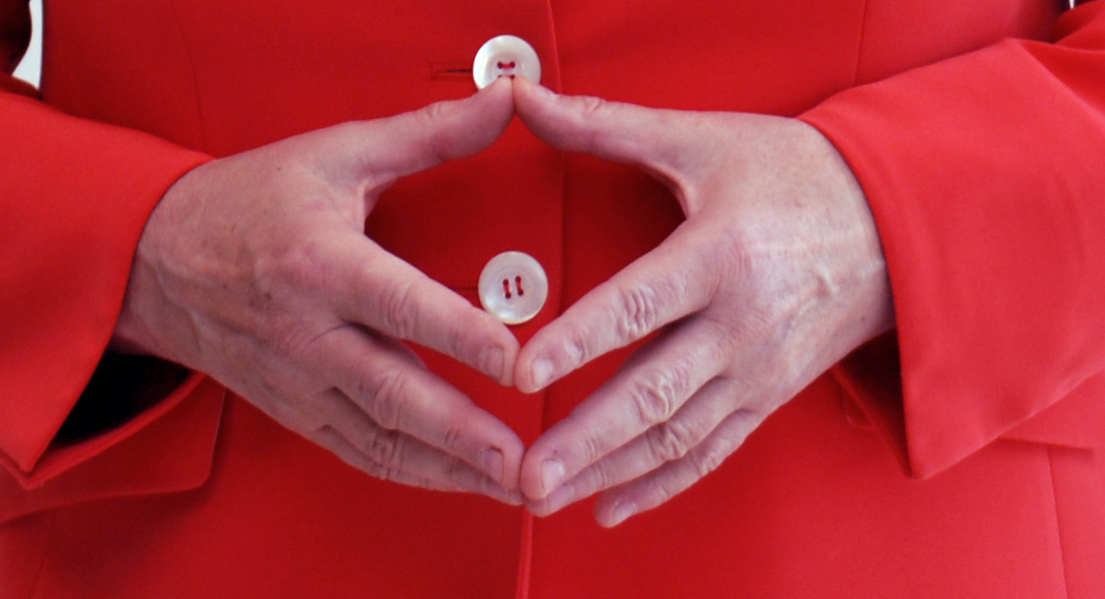Six months after the establishment of the state of siege, proclaimed by President Félix Tshisekedi on May 1, 2021, the Congolese government is still unable to curb the endemic insecurity that reigns in the provinces of North Kivu and Ituri. This exceptional regime, scheduled to last 30 days under the terms of the Constitution, has just been extended for the twelfth time by parliament in early November, which left the public with the impression of a failure of the public authorities to face the repeated security crises in the two provinces.
Generalization of insecurity in eastern DRC
Beyond the state of siege, the overall security situation in the DRC remains very worrying and volatile. On October 18, 2021, the locality of Kibumba, in North Kivu, was invaded by elements of the Rwandan army before being dislodged by the FARDC. On November 3, 2021, it was the turn of the city of Bukavu, in South Kivu, which was the scene of an incursion by an armed group called CMC-A64. Less than a week later, it was the villages of Chanzu and Runyoni, in the border area with Uganda in North Kivu, which suffered attacks on the night of November 7 to 8 by the rebel faction of M23 / Runiga, supported from Kigali, according to in-depth investigations carried out by Afridesk.
Since the launch of the state of siege, the situation quickly got bogged down to the point that the army and security forces quickly lost control of the situation. From now on, it is the total confusion which reigns in the two provinces placed under the state of siege. Beni and Ituri have become the epicenter of insecurity and odious massacres committed on civilians in the face of the military powerlessness of the FARDC.
Since the launch of military offensives in May 2021, both in North Kivu and Ituri, the massacres have increased compared to the period preceding the implementation of the state of siege, according to the monitoring of the Kivu Security Barometer ( KST) of the Congo Research Group. The citizen movement La Lucha has recorded more than 1,502 civilians killed in the provinces under a state of siege; an average of 8 civilians killed per day, 61 vehicles and 32 motorcycles set on fire. [1]
Several foreign armies and rebel groups, in increasing numbers, continue to operate in these two provinces. These include Rwanda, South Sudan, Uganda and Burundi. Indeed, Rwanda and Uganda both have historical ties to armed groups and rebellions in Ituri and North Kivu. For reasons of geographical proximity, Rwanda maintains more interactions with North Kivu, which borders the country, while Uganda has played a harmful role in Ituri and in the North lands of the North Kivu province.[2] Several studies have shown that the Ugandan, Rwandan and Congolese governments are responsible for arms transfers and the creation of armed groups in the region.[3]
State of siege an exceptional measure that dragged on in defiance of the law
In fact, from a legal and constitutional point of view, the state of siege is an exceptional and temporary regime, putting in place a regulation which entrusts to a military authority the responsibility of maintaining public order and the administrative management of a military authority in the country or part of its territory facing a very serious and imminent security threat.
As an exceptional measure, resulting in particular in the restrictions of the fundamental rights and freedoms of citizens, the operations of the state of siege are supposed to be limited in time, in accordance with the Constitution. Which is not the case. Indeed, the Congolese Parliament almost systematically extends this measure without taking into account the recommendations made in the debates or in the recent parliamentary summary report on the assessment of the state of siege drawn up, to the point of trivializing it. This distorts the very essence of this measure, with the risk of generating a situation of legal insecurity by deviating the state of siege from its initial military objectives towards political and electoral objectives in the medium and long term.
We can therefore remember that the decision to declare a state of siege was taken in haste and lack of preparation, but above all in almost total ignorance of the legal and military outlines which motivate, accompany and frame this measure.
Lack of resources, planning and overall strategy to fight against insecurity
The assessment made by Congolese deputies in August 2021 notes a mixed record while the Minister of Defense notes ” positive results “. As for us, one can affirm that the results of the military actions undertaken within the framework of the state of siege are largely negative.
The summary report of the hearings on the assessment of the state of siege prepared by the Defense and Security Commission of the National Assembly of the DRC mentions, among other things, the arrears of operating costs; weak financial and logistical resources; the non-existence of reserve units, the irregularity of medical care and the bonus for soldiers at the front; the issue of controlling army personnel in the field of operations; infiltration of the armed forces by ADF rebels; the promotion of former military executives already compromised in criminal activities to the rank of animators of the state of siege in the same circles in which they previously worked, etc.[4]
On the whole, there are recurring problems of indiscipline and cohesion (unity of command) within the Congolese army. Logistical means are insufficient, if not inappropriate and obsolete. The morale of the troops engaged in the fighting remains anemic due to the lack of financial means to properly maintain the military. The salaries of the military and their bonuses are modest, often diverted by the hierarchy. The military budget is insignificant, around 295,500,000 USD for 2021, a sharp drop compared to previous years. The FARDC Chief of General Staff requested the sum of 595,000,000 USD , i.e. double the current budget to cover, among other things, the debts of the army and the acquisition of materials for the rise of the army [5].The DRC army does not have a military programming law supposed to set multi-year budget forecasts for its modernization and its rise.
An army in tatters
On the operational level, there has been practically no replacement of the units, often implicated, for several years. As mentioned above, military operations in North Kivu and Ituri highlight the state of decay of the army and its command. In the field, we often see conflicts of competence between the various heads of military structures. Most of them compete for the resources allocated to operations. This has a negative impact on the conduct of operations. Just like the parliamentary report, cases of internal complicity within the army are also pointed out through the collusion between certain officers / commanders of the army and the security services with the militias of their communities of origin. This leads in many cases to the passivity of troops in combat. The numbers – often fictitious – of the military in the field of operations are largely in deficit compared to the theoretical numbers.
With theoretical troops – probably inflated – estimated at around 176,000 men, the FARDC remains an operationally weak and heterogeneous army, with a vague, if not almost non-existent, order of battle. There is a disorganization of the army due to unsuccessful reforms, the integration of militias and unruly rebellions. The FARDC is an army where abstruse and changing, even contradictory hierarchical loyalty mechanisms coexist, which complicate the effectiveness of troops engaged in combat, victims of internal complicity with local and foreign armed groups and rivalries between heads of units.
The state of siege, a hot potato for the 2023 elections ?
In addition to the military aspects, the state of siege drastically disrupts the traditional course of public life in the two provinces concerned by its share of exceptional measures and the omnipresence of the military. Several acts of administrative harassment caused by armed men are reported in the two provinces concerned. The number of acts of human rights violations in the two provinces has risen sharply since the launch of the state of siege. The restrictions on the rights and freedoms guaranteed by the population are beginning to exacerbate the local populations who believe they are in an area under military occupation. This whole situation risks seriously jeopardizing the next electoral cycle in the two provinces if nothing is done to curb insecurity in these two provinces, or even in South Kivu which is also sinking into violence. Recent statements by the Minister of Communication and Media [6], and the interim President of the UDPS to prolong ad vitam æternam the state of siege as long as peace is not restored in these two provinces risks heating the spirits while no concrete objective measures are taken by the Government to allow the FARDC to ramp up in operations.
Conclusion
The future of the state of siege does not bode well for possible optimism in the short and medium term. We keep doing the same thing instinctively: acting without thinking or planning upstream operations to assess their impact on the ground.
We will never stop saying that the FARDC remains an ineffective army with a weak, disorganized, dysfunctional (superimposition of command structures) and poorly competent command [7];which requires a deep relifting. Nepotism and patronage continue to take hold in the army.
Presidential efforts, disorderly and not conceptualized in a comprehensive strategic plan to reform the security services – as recommended in particular by the parliamentary report on the state of siege – do not yet impact the operational effectiveness of the FARDC.
The recent attacks in South Kivu and North Kivu show that the security threat in the DRC largely stems from the intervention of neighboring countries . The military option, via the state of siege, does not seem to us to be an appropriate solution to the security crisis in eastern DRC. The crisis is at the same time political, geopolitical, sociological and military. It requires a holistic approach, particularly regional with firm support from the international community as in 2013 during the defeat of M23.
In addition to accelerating the implementation of a new reform plan for the FARDC, including the reform of military justice, there is an urgent need to put in place an ambitious National Integral Security Plan which would include the allocation appropriate financial resources to strengthen military and security institutions.
In the operational sectors, it would be necessary to proceed with the recovery of native officers who have worked for a long time in the east of the country, as well as the relief, reconditioning and rapid reorganization of units engaged in operations for several years. These are mainly units and soldiers from the former rebellions that have raged in the area. The issue of staff control should be effectively resolved by enforcing the application of staffing tables (TD) in accordance with organic tables (TO).
At the same time, we should invest in strengthening collaboration and restoring bonds of trust between civilians and the military because no war can be won without the trust of the population. However, the situation of the state of siege – with the administrative hassles, the presence of the military in the mines and in private farms, as well as the abuses of freedom that it causes -, continues to widen the gap of mistrust between civilian populations and the military.
The mechanisms for implementing the Disarmament, Demobilization, Community Reintegration and Stabilization Program (PDDRC-S) should also be reviewed, the current structure of which casts doubt on its effectiveness. Indeed, its coordinator, Tommy Tambwe Ushindi, a former rebel leader of the M23, is contested by several actors. He is suspected of still having links with armed groups which continue to kill in the east of the country.
Finally, we should advocate for active involvement of MONUSCO and better collaboration and coordination of operations and actions with the FARDC and civil society.
Rather than continuing to govern by challenge by plunging our heads in the sand, we invite the Congolese authorities to take into account the findings and recommendations of the parliamentary report. This report notes, among other things, that the proclamation of the state of siege was not underpinned by strategic action planning of the state of siege. It was done without a substantial and coherent financial package, without definition of military objectives and without a chronogram of strategic, operational and tactical actions . The parliamentary report agrees with AFRIDESK’s credo . It recommends to the Government (especially to the President [8]) to define a national security policy with all its components in an adapted security reform plan outline and revised by a military programming law to be submitted to Parliament. It is at this precise level that one could assess the degree of political will of the Supreme Commander of the armed forces to want to establish security in the DRC.
References
- [1] https://www.7sur7.cd/2021/11/08/est-de-la-rdc-plus-de-1500-civils-tues-depuis-linstauration-de-letat-de-siege-lucha 
- [2] International Crisis Group, DR Congo: Ending Cyclical Violence in Ituri, Africa Report N ° 292 | July 15, 2020.
- [3] https://www.amnesty.org/download/Documents/100000/afr620062003en.pdf .
- [4] National Assembly of the DRC, Summary report of the hearings on the assessment of the state of siege, August 2021.
- [5]Ibid.
- [6] https://www.france24.com/fr/%C3%A9missions/l-emploi/20211105-patrick-muyaya-il-est-extr%C3%AAemment-dangereux-de-raviver-des-questions-tribales-en -rdc .
- [7] The skills of the military remain insufficient and the basic training of officers is on the cheap.
- [8] Defense is an area of collaboration between the President and the Government. In reality, in the DRC, defense remains a domain of the President’s preserve. The Minister of Defense remains without portfolio. He has no right of initiative on the allocation of this budget and its control. It is other people of the direct entourage of the Head of State, in particular of the Military House of the President, who are in charge of activating the budget lines of the army.
About the author: Jean-Jacques Wondo Omanyundu is an analyst of socio-political, security and military issues in DR Congo and the Middle Africa region. He is graduated from the Royal Military School and graduated in High Security and Defense Studies from the Royal Higher Institute of Defense (Belgium). He is an expert, consultant, researcher and the author of several articles and books on African and Congolese armies.



